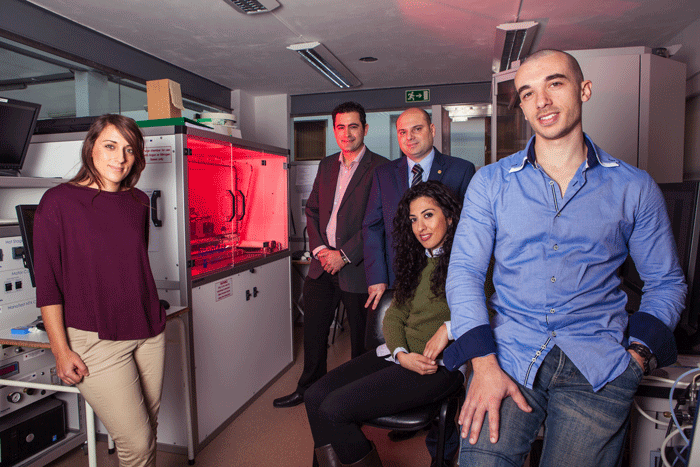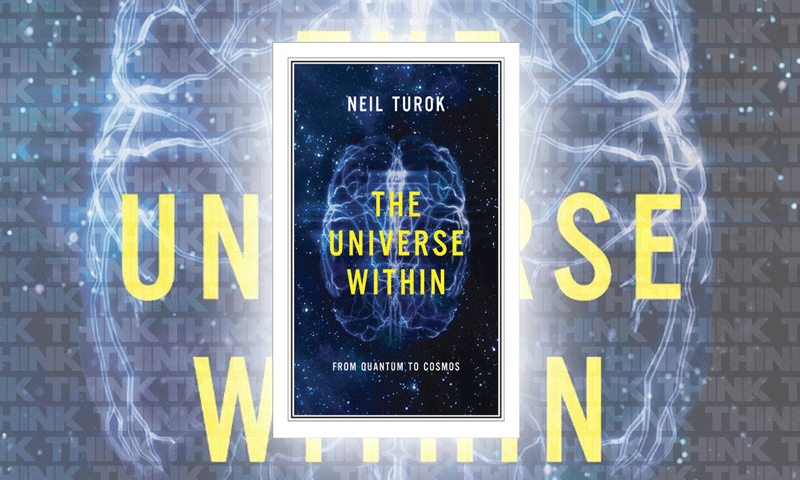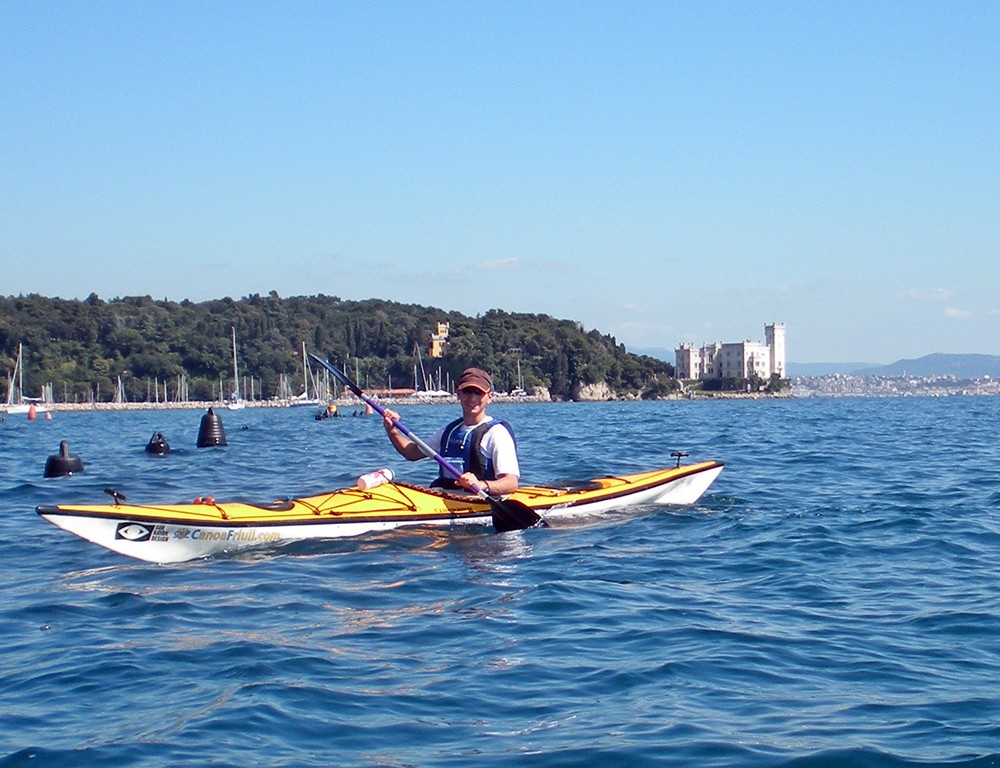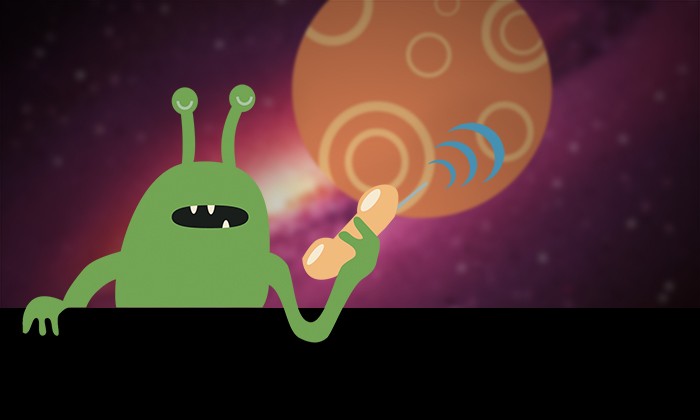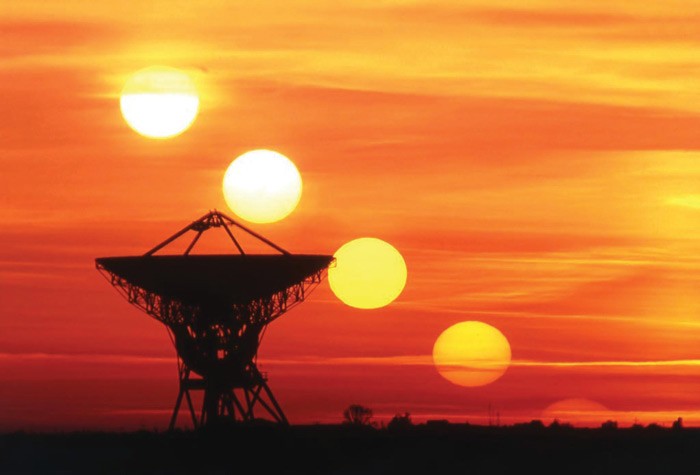The Universe Within

Would you like to learn about how the cosmos works? Why it relates to our society? In short, how quantum physics can change your life? Then read The Universe Within by Neil Turok.
The laws of mathematics and physics rule our Universe. Neil Turok does not shy away from showing a few equations then devoting pages to what they mean, so you might need to come equipped with some basic mathematical skills.
The Universe Within is yet another astrophysics/quantum physics book talking about our amazing and wonderful Universe. It uses the typical formula of talking about the usual heavyweights like Einstein and Newton amongst others. However, Turok surprises by talking about oft glossed over scientists namely from the Scottish Enlightenment. At the turn of the 18th century, Scotland proved the unlikely source of leading intellectuals such as Adam Smith (who invented capitalism), David Hume (revolutionised philosophical thought), and James Watt (invented the steam engine). Turok also focuses on the achievements of Michael Faraday and James Clerk Maxwell (responsible for finding out the relation between electricity and magnetism, which drives devices from electrical generators to wireless chargers).
Turok loves science. This drive leads to some great moments in the book. He has one of the most beautiful descriptions of the Big Bang, space-time, and Einstein’s E=mc2 — you might finally understand them all. He has a nice style if uneven. At times, he falters by being too academic and using overly complicated analogies.
The scientific idea behind the whole book is his explanation to take the Universe into the quantum domain. He sees the Universe as having existed before the Big Bang and that it will exist past the following Big Bang. ‘There was no beginning of time nor will there be an end: the Universe is eternal.’
“He sees the Universe as having existed before the Big Bang and that it will exist past the following Big Bang”
Through this book Neil comes across as an enlightened man. One of his predictions sees the next Einstein arise from Africa. This continent is full of untapped potential and has enough problems to fill all the issues of THINK a few times over. To solve them you need scientists and skilled people. With this in mind he helped set up the African Institute for Mathematical Sciences — a true visionary, who had to flee South Africa due to his parents’ role in trying to bring down British apartheid.
Turok also knows his philosophy. In the beginning, he links Einstein’s thoughts to Hume. Towards the end of the book more philosophical questions arise. This is one of my favourite parts of the book, till he strangely asks: might we be the means for the Universe to gain a consciousness for itself? He also sees quantum physics as a role model for society, and manages to sneak in how quantum computers will evolve with humans making some form of hybrid species.
The author has a good heart. His ideas about the skills today’s children need, how scientists are human, and the meaning of life are beautiful. He also hits the nail on the head when writing, ‘politicians tend to think no further than the next election, scientists no further than the next grant’. This book is worth a read, and if you don’t understand it you’ll definitely look clever having it on your coffee table.
Trieste: city of science, karst land and sea
Anthony Galea shares his passion for the sea
Growing up on the small island of Gozo, it was inevitable that the sea would exert a powerful influence on me. As a child I never tired of the sea, swimming, cooling off and floating on it in little boats. As I grew older, I came to see the sea as more than just a pretty playground. ‘Where do waves come from?’ ‘What generates sea currents?’ ‘How can I surf a wave?’ Were some questions that aroused my curiosity and motivated me to study the oceans, and eventually to choose to study physical oceanography and fluid dynamics.
Before commencing this journey, I read a B.Sc. (Hons) in Mathematics and Physics (University of Malta), graduating in 2008. Afterwards, I read an M.Sc. in Physical Oceanography, pursuing this qualification while working at the International Ocean Institute — Malta Operational Centre (IOI-MOC, University of Malta). One of the most interesting aspects of my research was studying storm surges around the Maltese Islands. The aim was to develop components to forecast variations in sea level around Malta.
In 2011, I was offered a scholarship at the School of Environmental and Industrial Fluid Mechanics (University of Trieste) in Italy. My Ph.D. research focused on the numerical modelling (Large Eddy Simulation) of coastal areas, in particular, the Barcelona harbour in Spain and the Bay of Taranto in Italy. My objective was to simulate the turbulent water mixing in the ports in order to understand the sea currents and circulation within the bays and thereby to quantify the water renewal within the basins.
Trieste, characterised by the bracing air of the famous Bora wind and by its splendid views of the Adriatic Sea, hosts many world renowned institutions and international organisations. Living in such a ‘city of science’ has allowed me to meet many celebrated scientists at seminars, workshops, and scientific conferences.
Through video conferencing I deliver a weekly physics study unit in Fluid Mechanics at the University of Malta. I am pleased that the beautiful blue Mediterranean waters are still motivating other Maltese students.
My interest in the sea has brought me a long way, not only academically but by experiencing new cultures and indulging my love of cycling along the karst (garigue) coastline.
But I remain at heart that same boy with a love of the sea. I look forward to climbing aboard my trusty kayak, revelling in the ebb and thrust of the rolling waves to continue exploring the rugged coastline of my beloved Gozo.
Stalking E.T.
There are over 100 billion galaxies in our universe. Each galaxy has billions of stars. Each star could have a planet. Planets can breathe life. Alessio Magro writes about his experience hunting for E.T. Illustrations by Sonya Hallett
In 1982, 4 years before I was born, the world fell in love with Spielberg’s E.T. the Extra-Terrestrial. Fifteen years later, the movie Contact, an adaptation of Carl Sagan’s novel, hit the big screen. Although at the time I was too young to appreciate the scientific, political, and religious themes I was captivated and it fired my thoughts. I questioned whether we are alone in this vast space. What would happen if E.T. does call? Are we even listening? If so, how? And, is it all a waste of time and precious money? Instead of deflating me, these questions inspired me to start a journey that led me to my collaboration with SETI, the Search for Extra Terrestrial Intelligence. I participated in ongoing efforts to try and find intelligent civilisations on other worlds.
The debate on whether we are alone started ages ago. It was first debated in Thales, Ancient Greece. Only recently has advanced technology allowed us to try and open up communication channels with any existing advanced extraterrestrial civilisations. If we do not try we will never answer this question.
For the past fifty years we have been scanning the skies using large radio telescopes and listening for signals which cannot be generated naturally. The main assumption is that any advanced civilisation will follow a similar technological path as we did. For example, they will stumble upon radio communication as one of the first wireless technologies.
SETI searches are usually in the radio band. Large telescopes continuously scan and monitor vast patches of the sky. Radio emissions from natural sources are generally broadband, encompassing a vast stretch of the electromagnetic spectrum — waves from visible light to microwaves and X-rays — whilst virtually all human radio communication has a very narrow bandwidth, making it easy to distinguish between natural and artificial signals. Most SETI searches therefore focus on searching for narrow band signals of extraterrestrial origin.
Narrow bands are locked down by analysing a telescope’s observing band — the frequency range it can detect. This frequency range is broken down into millions or billions of narrow frequency channels. Every channel is searched at the same time. SETI searches for sharp peaks in these small channels. This requires a large amount of computational resources, such as supercomputing clusters, specialised hardware systems, or through millions of desktop computers. The infamous SETI@home screen-saver extracted computer power from desktops signed up to the programme, which started as the millennium turned.
E.T. civilisations might also transmit signals in powerful broadband pulses. This means that SETI could search for wider signal frequencies. However, they are more difficult to tease apart from natural emissions, so they require more thorough analysis. The problem is that as broadband signals — natural or otherwise — travel through interstellar space they get dispersed, resulting in higher frequencies arriving at the telescope before lower ones, even though they both were emitted at the same time. The amount of dispersion, the dispersion gradient, depends on the distance between the transmitter and receiver. The signal can only be searched after this effect is accounted for by a process called dedispersion. To detect E.T. signs, thousands of gradients have to be processed to try out all possible distances. This process is nearly identical to that used to search for pulsars, which are very dense, rapidly rotating stars emitting a highly energetic beam at its magnetic poles. Pulsars appear like lighthouses on telescopes, with a regular pulse across the entire observation band.
For the past four years I have been developing a specialised system which can perform all this processing in real-time, meaning that any interesting signals will be detected immediately. Researchers now do not need to wait for vast computers to process the data. This reduces the amount of disk space needed to store it all. It also allows observations to be made instantaneously, hence reducing the risk of losing any non-periodic, short duration signals. To tackle the large computational requirements I used Graphics Processing Units (GPUs) — typically unleashed to work on video game graphic simulations — because a single device can perform tasks of at least 10 laptops. This system can be used to study pulsars, search for big explosions across the universe, search for gravitational waves, and for stalking E.T..
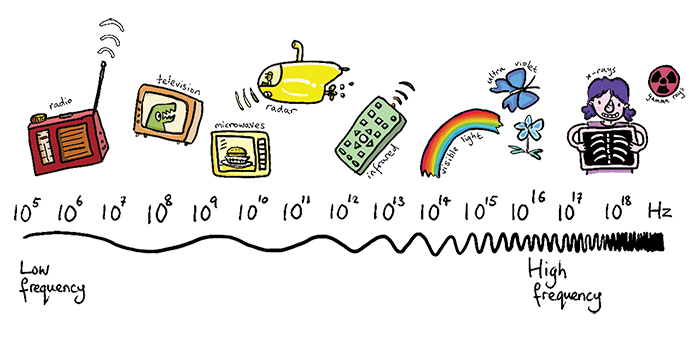
E.T. we love you
Hunting for planets orbiting other stars, known as exoplanets, has recently become a major scientific endeavour. Over 3,500 planet-candidates were found by the Kepler telescope that circles our planet, about 961 are confirmed. Finding so many planets is now leading scientists to believe that the galaxy is chock-full of them. The current estimate: 100 billion in our galaxy, with at least one planet per star. For us E.T. stalkers, this is music to our ears.
Life could be considered inevitable. However, not all planets can harbour life, or at least life as we know it. Humans need liquid water and a protective atmosphere, amongst other things. Life-supporting planets need to be approximately Earth-sized and orbit within its parent star’s habitable zone. This Goldilocks zone is not too far away from the sun, freezing the planet, or too close to it, frying it. These exoplanets are targeted by SETI searches, which perform long duration observations of exoplanets similar to Earth.
“The big question is: where do we look for E.T.? I would prefer rephrasing to: at which frequency do we listen for E.T.?”
By focusing on these planets, SETI is gambling. They are missing huge portions of the sky to focus on areas that could yield empty blanks. SETI could instead perform wide-field surveys which search large chunks of the sky for any interesting signals. Recent development in radio telescope technology allows for the instantaneous observation of the entire sky, making 24/7 SETI monitoring systems possible. Wide-field surveys lack the resolution needed to figure out where a signal would come from, so follow-up observations are required. Anyhow, a one-off signal would never be convincing.
For radio SETI searches, the big question is: where do we look for E.T.? I would prefer rephrasing to: at which frequency do we listen for E.T.? Imagine being stuck in traffic and you are searching for a good radio station without having a specific one in mind. Now imagine having trillions of channels to choose from and only one having good reception. One would probably give up, or go insane. Narrowing down the range of frequencies at which to search is one of the biggest challenges for SETI researchers.
The Universe is full of background noise from naturally occurring phenomena, much like the hiss between radio stations. Searching for artificial signals is like looking for a drop of oil in the Pacific Ocean. Fortunately, there exists a ‘window’ in the radio spectrum with a sharp noise drop, affectionately called the ‘water hole’. SETI researchers search here, reasoning that E.T. would know about this and deliberately broadcast there. Obviously, this is just guesswork and some searches use a much wider frequency range.
Two years ago we decided to perform a SETI survey. Using the Green Bank Telescope in West Virginia (USA), the world’s largest fully steerable radio dish, we scanned the same area the Kepler telescope was observing whilst searching for exoplanets. This area was partitioned into about 90 chunks, each of which was observed for some time. In these areas, we also targeted 86 star systems with Earth-sized planets. We then processed around 3,000 DVDs worth of data to try and find signs of intelligent life. We developed the system ourselves at the University of Malta, but we came out empty handed.
A camera shy E.T.
Should we give up? Is it the right investment in energy and resources? These questions have plagued SETI from the start. Till now there is no sign of E.T., but we have made some amazing discoveries while trying to find out.
Radio waves were discovered and entered into mainstream use in the late 19th century. We would be invisible to other civilisations unless they are up to 100 light years away. Light (such as radio) travels just under 9.5 trillion kilometres per year. Signals from Earth have only travelled 100 light years, broadcasts would take 75,000 years to reach the other side of our galaxy. To compound the problem, technology advances might soon make most radio signals obsolete. Taking our own example, aliens would have a very small time window to detect earthlings. The same reasoning works the other way, E.T. might be using technologies which are too advanced for us to detect. As the author Arthur C. Clarke stated, ‘any sufficiently advanced technology is indistinguishable from magic’.
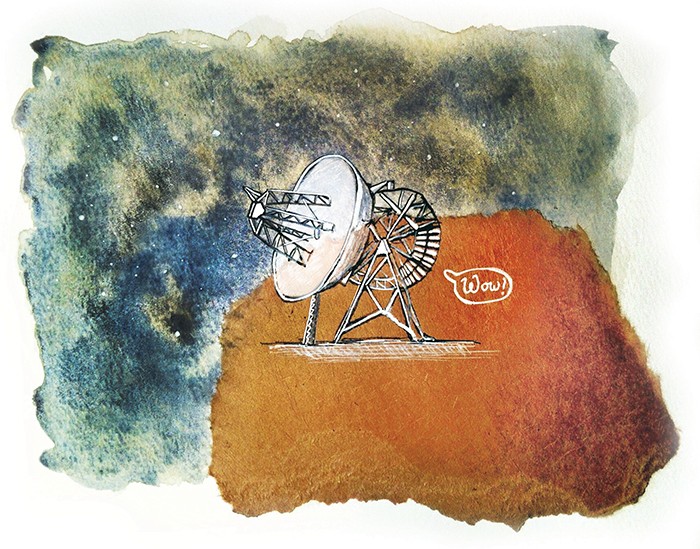
At the end of the day, it is all a probability game, and it is a tough one to play. Frank Drake and Carl Sagan both tried. They came up with a number of factors that influence the chance of two civilisations communicating. One is that we live in a very old universe, over 13 billion years old, and for communication between civilisations their time windows need to overlap. Another factor is, if we try to detect other technological signatures they might also be obsolete for advanced alien life. Add to these parts, the assumed number of planets in the Universe and the probability of an intelligent species evolving. For each factor, several estimates have been calculated. New astrophysical, planetary, and biological discoveries keep fiddling with the numbers that range from pessimistic to a universe teeming with life.
The problem with a life-bloated galaxy is that we have not found it. Aliens have not contacted us, despite what conspiracy theorists say. There is a fatalistic opinion that intelligent life is destined to destroy itself, while a simpler solution could be that we are just too damned far apart. The Universe is a massive place. Some human tribes have only been discovered in the last century, and by SETI standards they have been living next door the whole time. The Earth is a grain of sand in the cosmic ocean, and we have not even fully explored it yet.
“Signals from Earth have only travelled 100 light years, broadcasts would take 75,000 years to reach the other side of our galaxy”
Still, the lack of alien chatter is troubling. Theorists have come up with countless ideas to explain the lack of evidence for intelligent alien existence. The only way to solve the problem is to keep searching with an open mind. Future radio telescopes, such as the Square Kilometre Array (SKA), will allow us to scan the entire sky continuously. They require advanced systems to tackle the data deluge. I am part of a team working on the SKA and I will do my best to make this array possible. We will be stalking E.T. using our most advanced cameras, and hopefully we will catch him on tape.
[ct_divider]
Carl Sagan’s Cosmos
Exoplanets Galore
Xemxija and Earthquakes
On February 22, 2011, a magnitude 6.3 earthquake struck the city of Christchurch, New Zealand, killing 181 people and causing widespread destruction. Curiously, this damage was not evenly distributed, even for areas right next to each other. This phenomenon is called the site effect and depends on the underlying geology.
Malta, unlike New Zealand, is not typically associated with earthquakes. The islands lack a seismic building code and many structures could be damaged with moderate shaking. Malta’s past records list several earthquakes that have damaged buildings and even caused some to collapse. Apart from not being reinforced, buildings have been built on less stable ground, which increases risk.

Sharon Pace (supervised by Dr Pauline Galea) investigated this effect in one test area — Xemxija, in the north of Malta. She studied how sites in Xemxija would respond to the energy from an earthquake by using a portable seismograph to record ambient noise (caused by sea waves, vehicular traffic, and other anthropogenic sources) at over 100 points across the village (pictured). The ground’s surface can be considered a vibrating platform, which can be shaken both by ambient noise as well as stronger waves from earthquakes. The ground may “resonate” at particular frequencies, or not at all, depending on the kind of rock or soil layers making up the top 30 to 50 metres. Analysis of ambient noise shows if such resonance phenomena exist, how they are related to the local geology, and how this would translate into actual earthquake shaking.
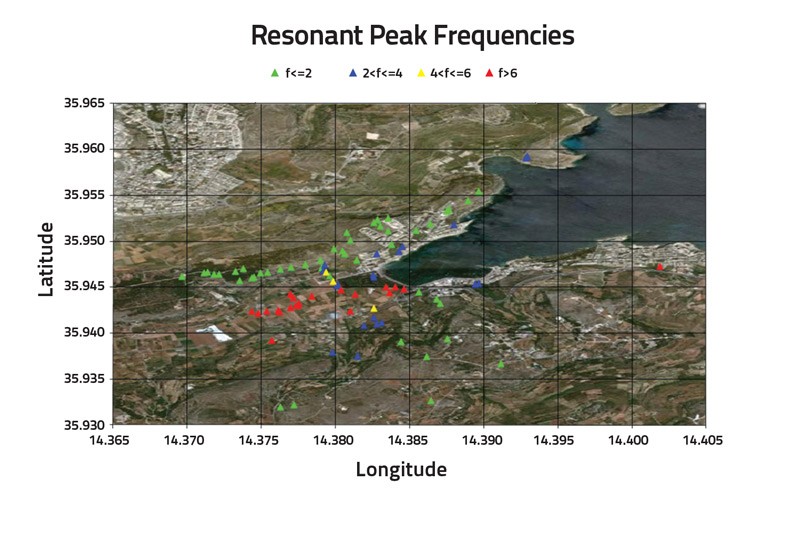
At Xemxija, the study confirmed that the presence of clay (whether at the surface or buried) does amplify the grounds motion at certain frequencies. The results match previous studies in other areas, but this research went further by constructing geological models that can determine the ground’s underlying structure .
Taken together, the survey shows areas in Xemxija that might need extra support to survive future earthquakes and prevent deaths. Xemxija is not the only area with soft clay geology, the urbanised area of Mellieħa and historic citadel Mdina are built on top of similar structures. Considering the importance of these areas means that more studies are needed to better understand the structure of Maltese buildings and how they would respond to earthquakes.
This research was performed as part of a Masters of Science in Physics at the Faculty of Science. It was partially funded by the Strategic Educational Pathways Scholarship (Malta). This scholarship is part-financed by the European Union — European Social Fund (ESF) under Operational Programme II — Cohesion Policy 2007 – 2013, “Empowering People for More Jobs and a Better Quality of Life”.
The Universe is Strange and Beautiful
Super dense stars shooting jets of radiation, black holes swallowing up stars, supernovae, and unexplained bursts of gamma rays. These are all examples of a ‘transient event’, an incident that lasts at most a few days. They are amongst the most powerful and mysterious phenomena in the universe, but from Earth they appear as ‘blips’ on our telescopes, making them very difficult to study.
Byron Magri (from the Astronomy, Astrophysics and Cosmology Research Programme (AACRP) and supervised by Dr Kris Zarb Adami) is shedding light on how to detect these fleeting wonders. His work is focused on fast transients that only last a few seconds.
Earth-based radio telescopes (aka antennae) are as big as they can get. The problem is that astronomers need bigger telescopes to produce higher resolution images to reveal finer details about these objects and find new discoveries. The solution is to use arrays of smaller radio antennae that are linked together. Interferometry is used to combine the data.
The technique uses enormous computing power to measure the radio waves phase delays being gathered by the individual antennae. Interferometry then overlaps and superimposes them to produce a stronger signal and an image with a much higher resolution.
For this technique to work, it must carry out all the calculations as the event is happening. The computer algorithm interpreting the data must also filter out all the noise due to the Earth’s atmosphere. To top it all off, the transient events need to be singled out.
To meet these challenges Magri used GPUs (Graphic Processing Units), which are usually used by hardcore gamers to power the most advanced graphics. The design of GPUs lends itself well to heavy numerical processing. Magri wrote an algorithm that acts as an inferometer on a GPU and he is testing it on data from the BEST-2 radio telescope array in Medicina, Italy.
Developing these algorithms is important to make future arrays larger. The next generation interferometer, the Square Kilometer Array, will have hundreds of antennae, meaning that information extraction will need to be extremely efficient and rapid. These algorithms are a keystone to maximise the potential of a €1.5 billion telescope to find more amazing phenomena in our universe.
This research was performed as part of an M.Phil. (Melit.) in Physics at the Faculty of Science. For more about Malta’s role in the Square Kilometre Array see pg. 14, Issue 02 of Think magazine (http://bit.ly/SKATHINK).
Racing into the Future
 Way back in 2007, a dedicated group of six people put together a formula-style race car in just six months to compete in a prestigious international competition called FSAE. Since then no other team has participated. Students were always interested to build a racing car but found it too hard to actually carry out — the underlying logistics were simply too much.
Way back in 2007, a dedicated group of six people put together a formula-style race car in just six months to compete in a prestigious international competition called FSAE. Since then no other team has participated. Students were always interested to build a racing car but found it too hard to actually carry out — the underlying logistics were simply too much.
In December 2012, a group of motivated university students founded the University of Malta Racing (UoMR) team. Their mission statement: ‘To encourage and facilitate students of the University of Malta to unite together as a team in the planning, design and construction of a Formula-style race car and to participate in the Formula SAE, or similar competitions.” They were brought together by a love of cars, engines, speed and a competitive spirit.
 The 2007 team placed 17th out of 20 teams. The new team has stiff competition and huge challenges to overcome for the upcoming competition in July 2014. Foreign universities compete every year and build a database of knowledge and experience which students use to continue improving their cars. For the UoM to compete eff
The 2007 team placed 17th out of 20 teams. The new team has stiff competition and huge challenges to overcome for the upcoming competition in July 2014. Foreign universities compete every year and build a database of knowledge and experience which students use to continue improving their cars. For the UoM to compete eff
ectively with top-class international universities, there must be a strong framework which supports and encourages students from every faculty, especially the Faculty of Engineering. To overcome this challenge the team extensively researched the parts, materials needed and procedure to build a competitive vehicle. The PR and Finance team of the UoMR also drew up a sponsorship proposal, which was used to attract sponsors and collaborators. Without them the project would not be possible.
The team is currently working on the car’s design. At the same time they are fabricating some parts and structures inside their workshop at University. They are looking for financial or in kind assistance from driving enthusiasts and organisations. •
For more information on UoMR and contact details visit: uomracing.com. The University of Malta’s research trust, RIDT, fully supports the UoM racing team initiative. The trust aims to sustain and grow the UoM’s research activity. Please consider making a contribution at www.ridt.eu

